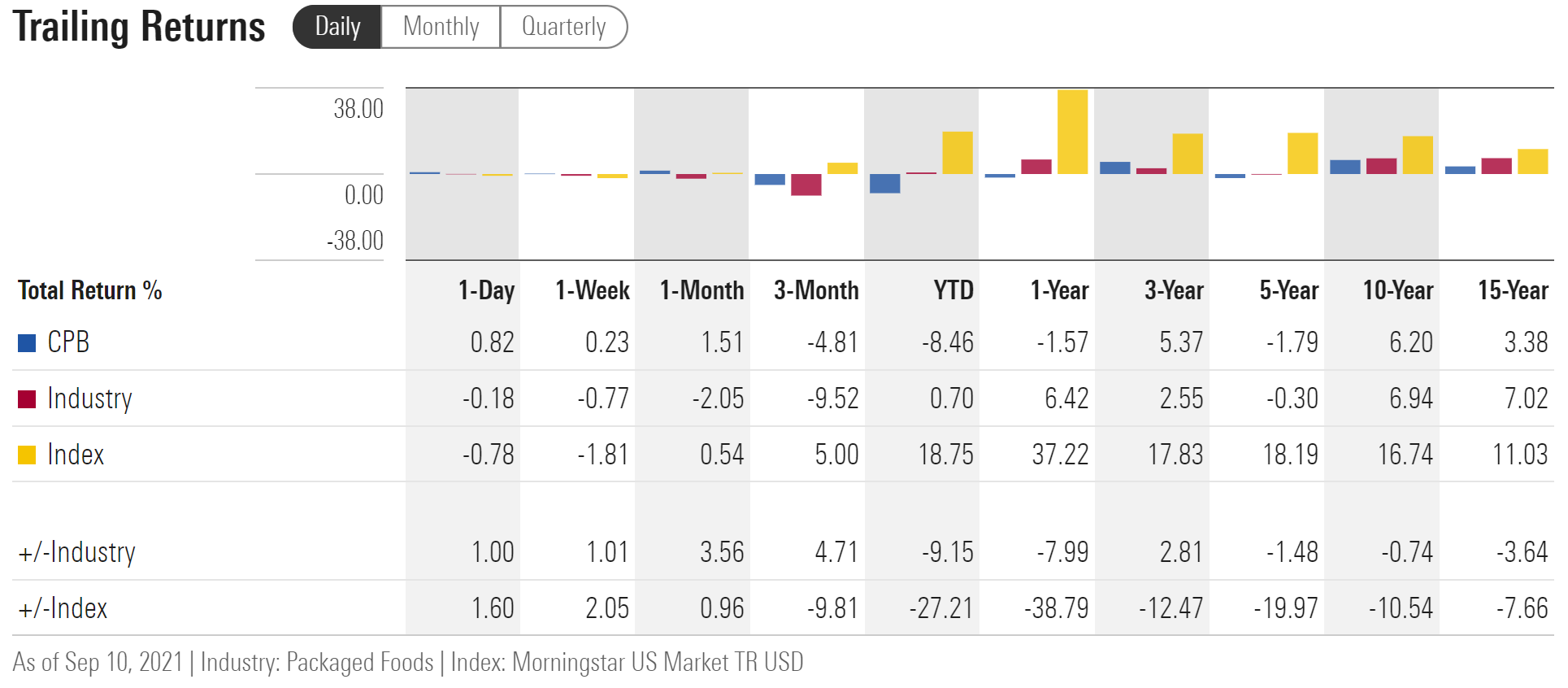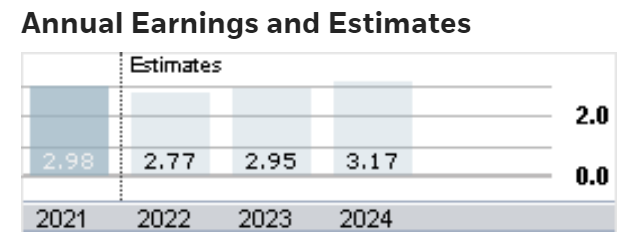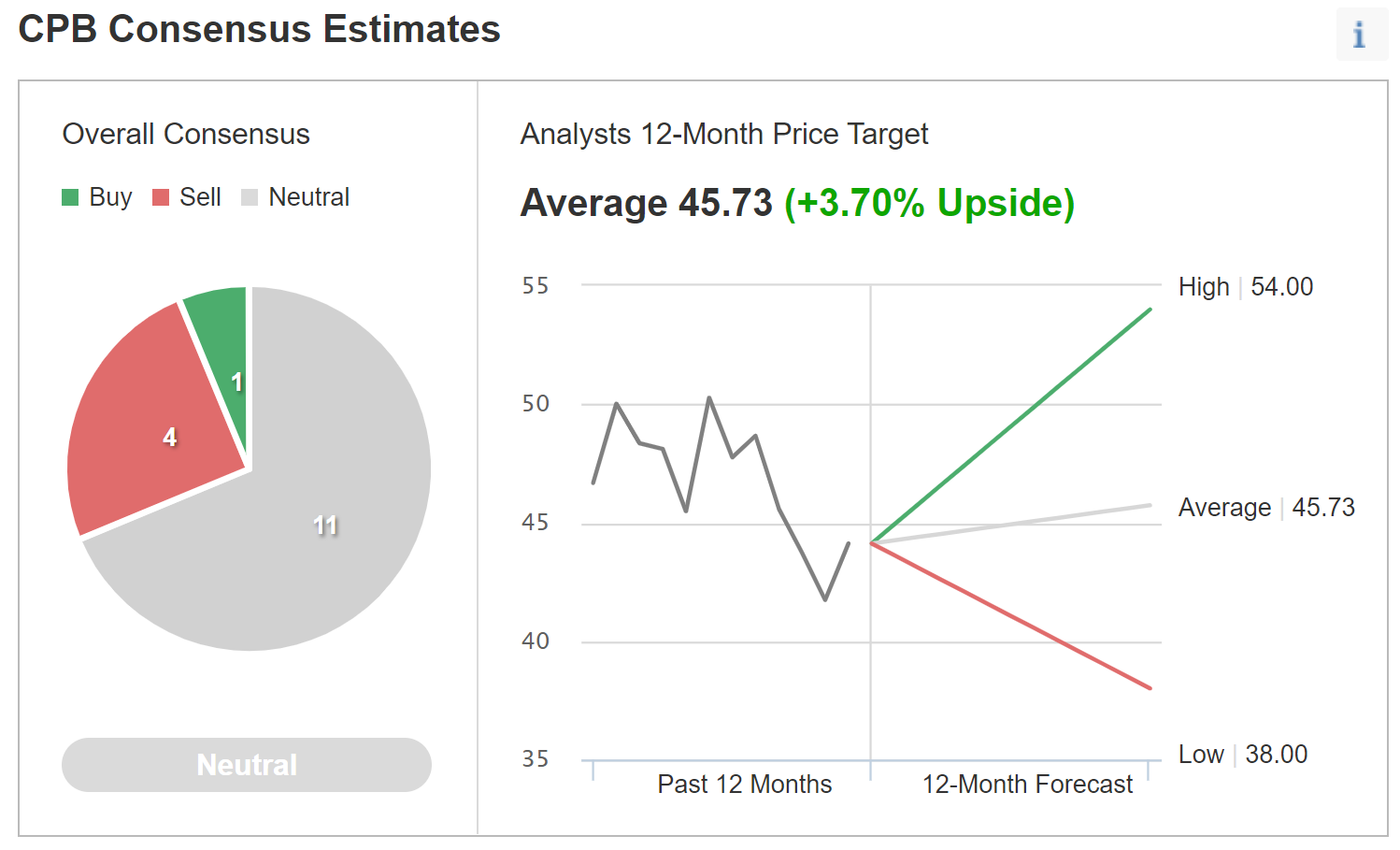Campbell Soup (NYSE:CPB) reached its 2020 high closing price of $53.48 on Aug. 26. Since then, the shares have declined 17.4% to reach the current price of $44.14. The shares are far below the trailing 5-year high close of $63.84 on Feb. 9, 2017.

Source: Investing.com
CPB has total returns that are lower than for the Packaged Foods industry for the 1-, 5-, 10-, and 15-year periods. Over the past 15 years, CPB has annualized total return that is less than ⅓ that of the broader equity market.

Source: Morningstar
CPB has a beta of 0.6 relative to the S&P 500. Historically, low-beta stocks have delivered higher returns than expected on the basis of CAPM (Capital Asset Pricing Model), but I am concerned that another effect is counteracting this historical benefit. As an increasing fraction of money flows to index funds, low-beta stocks tend to under-perform. When the S&P 500 goes up (down) 1%, a stock with a beta of 1.0 tends to go up (down) 1% and CPB tends to go up (down) 0.6%. As the market rises in a bull market, low beta stocks tend to have a diminishing allocation in market cap weighted indexes because they gain less than higher-beta stocks. As new money flows into the index, the low beta stocks receive progressively of this inflow over time.

Source: eTrade
The stock’s forward P/E of 15.3 and forward dividend yield of 3.4% look reasonable. The concern is earnings growth. The consensus outlook is for 2022 and 2023 EPS to be lower than 2021, although 2024 is projected to be 6.4% above 2021. The projected 3-5 year annualized EPS growth rate is 0.67% per year. These are not encouraging numbers.
In analyzing stocks, I consider two forms of consensus outlooks. The first is the well-known Wall Street analyst consensus rating and price target. The second is the consensus outlook for the probabilities of the range of price returns, as reflected in options prices. This is referred to as the market-implied outlook. The price of an option represents the market’s consensus estimate of the probability that the share price of the underlying stock (CPB, in this case) will rise above (call option) or fall below (put option) a specific level (the strike price) between now and when the option expires. By analyzing options prices at a range of strikes and a common expiration date, it is possible to infer the market’s probabilistic outlook for price returns that reconciles the options prices. For readers who are unfamiliar with this concept,I have written a brief overview of market-implied outlooks, including links to the relevant finance literature.
Wall Street Consensus Outlook for CPB
eTrade’s calculation of the Wall Street consensus outlook combines the views of 9 ranked analysts who have published ratings and price targets within the past 90 days. The consensus rating is neutral and the consensus 12-month price target is 3.8% above the current price.

Source: eTrade
Investing.com combines the views of 16 analysts to calculate the Wall Street consensus rating and 12-month price target. The consensus rating is neutral and the consensus 12-month price target is $45.73, almost identical to the value calculated by eTrade.

Source: Investing.com
The eTrade and Investing.com consensus ratings for CPB are both neutral. With 3.75% expected price 12-month price appreciation and the 3.4% dividend yield, the expected total return for the next year is 7.2%.
Market-Implied Outlook for CPB
I have analysed call and put options on CPB at a range of strikes, all expiring on Jan. 21, 2022, to generate the market-implied outlook for the next 4.3 months (from now until the expiration date). The resulting market-implied outlook reconciles the options prices closely. Theoretical options prices calculated using the market-implied outlook match the market prices of the options with an average error of 1.3% of the market prices.

Source: Author’s calculations using options quotes from eTrade
There are two small peaks in probability, and the maximum probability corresponds to a price return of -3.5% for the next 4.3 months. It is not uncommon for market-implied outlooks to manifest two small peaks. The annualized volatility of this distribution is 23.7%. eTrade has a tool that calculates implied volatility for options, and the value for the Jan. 21, 2022 options is 22%.
To make it easier to compare the relative probabilities of positive and negative returns, I look at a version of the market-implied probability distribution with the negative return side rotated about the vertical axis (see chart below).

Source: Author’s calculations using options quotes from eTrade. The negative return side of the distribution has been rotated about the vertical axis.
Viewed in this way, it is evident that there are consistently higher probabilities of negative returns than positive returns of the same magnitude. The higher probabilities of negative returns tend to indicate a bearish outlook, although there are two mitigating factors. The first is that, theoretically, market-implied outlooks would be expected to have a negative bias because risk-averse investors will tend to overpay for downside protection. In addition, dividend-paying stocks tend to have a negative tilt in the market-implied outlook because the dividends reduce the potential upside relative to the downside. In considering these two effects, I interpret this market-implied outlook as neutral. Because the option trading volume on CPB is fairly thin, I performed the same analysis using options expiring in February 2022 and I got very similar results.
Summary
Campbell Soup is struggling to grow. The consensus outlook is for very low earnings growth. The Wall Street consensus is neutral, with projected 12-month price appreciation of 6%. As a rule of thumb for assigning a buy rating, I want to see expected 12-month return for a stock that is at least half the expected annualized volatility. Taking Wall Street’s 12-month consensus price target, 7.2%, at face value, and using the expected volatility from the market-implied outlook, 23.7%, CPB falls far short. The market-implied outlook into early 2022 is neutral with a slight bearish tilt. Overall, CPB is not a compelling investment. There is not enough expected return to justify the risk level. My final rating is neutral.
